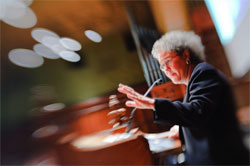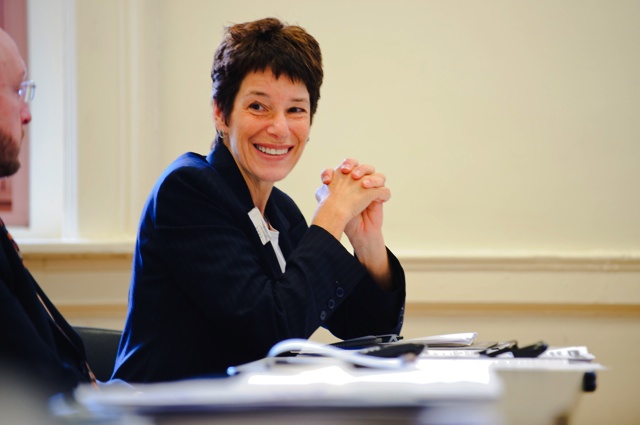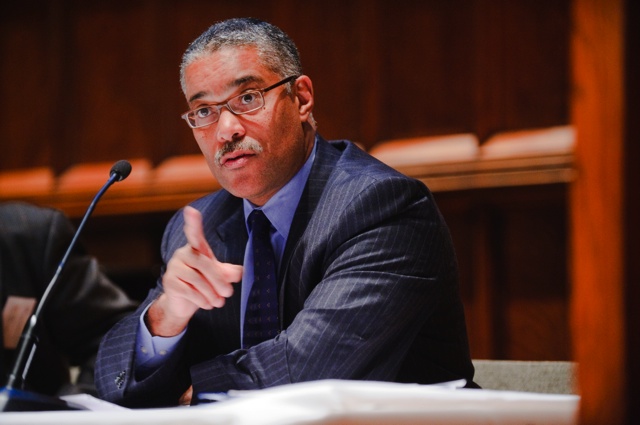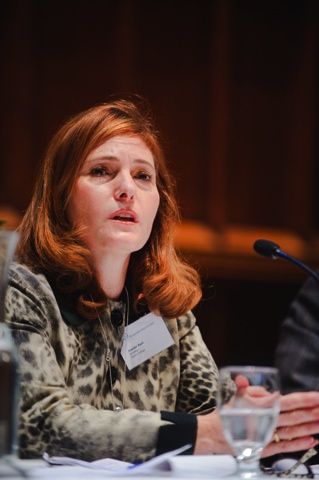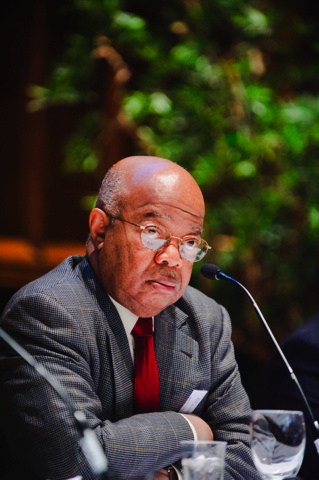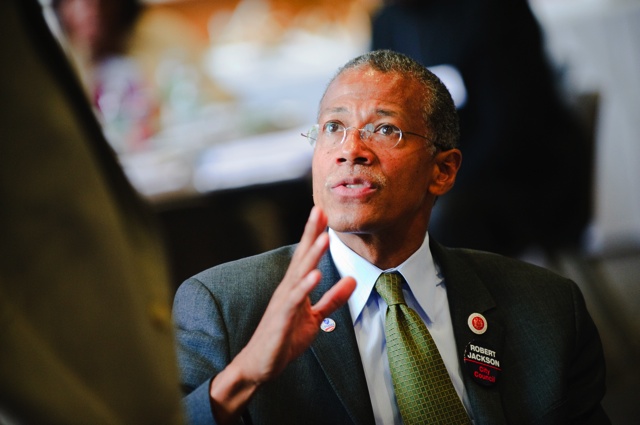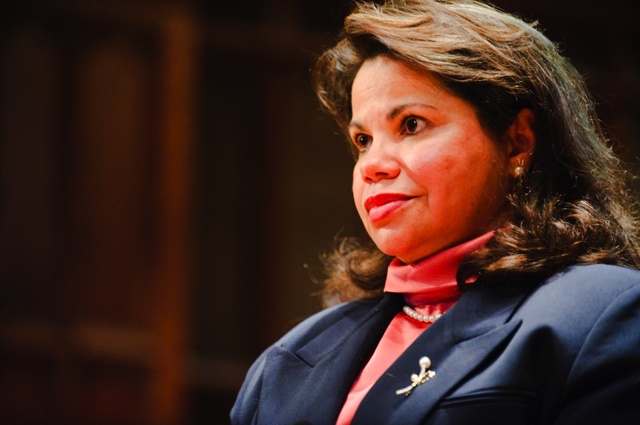Partnering Across the Education Pipeline: TC Holds Statewide Conference on Higher Education-Public School Partnerships
“We are publicly responsible for what happens in the schools. It is risky, of course, but it’s a commitment that we believe in.”
The speaker was Teachers College President Susan Fuhrman, greeting a gathering of nearly 200 education leaders and
By “we,” Fuhrman was referring both to TC, which is in the midst of an intensive new program of outreach to schools in
The Conference was organized by TC’s Office of School & Community Partnerships, created in 2006 to provide a single point of access for city schools to the College’s resources. The Office has raised more than $8 million in grants for school partnerships, including a new initiative to create after-school programming with four local community-based organizations. (For more on that initiative and on OSCP, see accompanying stories.)
A dominant theme at the meeting was that, amid the current economic crisis and cutbacks in public funding, partnerships between universities and public schools could be the only way the nation’s school system will be able to educate and train future generations.
Keynote speaker Linda Darling-Hammond, Charles E. Ducommun Professor of Education at Stanford University and the founder of a high school in California, stressed that such partnerships were not only possible, but necessary, to make the American education system work for children, families and the economy into the 21st century.
She noted that the
The solution will require a complete redesign of the nation’s education system, from pre-school through college, and a closing of the achievement gap between minority and white students—and that will not happen without increased school-university partnerships, which “can create, protect and document new educational designs,” Darling-Hammond said.
TC Associate Vice President Nancy Streim, who heads the Office of School & Community Partnerships, introduced a panel whose members described three different approaches to university-community partnerships—start-up, turnaround and wraparound.
Jennifer Raab, president of
Giving an example of the turnaround model, C. Kent McGuire, Dean of Temple University’s
The program arose from a “commitment of
TC Trustee James Comer, founder of the Comer School Development Program at
“The social network has a great influence on a parent and child,” he said. “This is very important when we think about the dropout rate. I knew from the beginning that I wanted to be a doctor, and I had a network that protected me from the nay-sayers.”
Comer’s program, which began in
Speakers emphasized that in successful partnerships, the commitment on the higher education side must begin with the president and faculty of a college or university. Panelist Corey Bowman, who develops school partnerships at the University of Pennsylvania, said Penn brings all the resources of the higher education institution to bear on its programs—not just the Graduate School of Education, but the School of Social Policy & Practice, the medical school, and the science, arts and humanities programs, as well as an academically based community service program that has Penn undergraduate students working in Philadelphia schools.
Another recurring message was that higher education must act as partners with the schools rather than as directors of collaborations, and not treat schools as simply places to do research. They must establish long-term, consistent cooperation over several years that helps provide schools the support they need.
Yet Raab also said that the higher education partner must be able to choose the leadership of a public school it partners with, and to work closely with the school on management and teacher training. She said she had been unwilling to put
Johanna Duncan-Poitier,
“This isn’t altruism any more,” she declared. By 2020, 60 percent of jobs are going to require a college education. The American system is graduating about four percent more students than in 2004. “At that rate, 14 million people will not have jobs,” she said.
Worsening the outlook, about one-third of students who start college don’t finish. Fifteen percent of students in four-year colleges, and 48 percent of those in two-year colleges, require remedial studies. Duncan-Poitier said that showing results from the preK-12 system’s failure to graduate students who are ready for college. “We need to start reviewing and renewing graduate standards, with higher education at the table,” she said. “We know that students who participate in partnership programs succeed.”
A final panel examined the issue through the lens of the current economic crisis and suggested that, now more than ever, preK-12 schools must rely on higher education’s more-stable financial resources as well as programmatic and research capabilities. Because
The economic downturn could make school systems more open to new cooperation with higher education, argued Seymour Fliegel president of the Center for Educational Innovation-Public Education Association. “There’s never been a better time to get creative.”
Published Monday, Oct. 27, 2008
